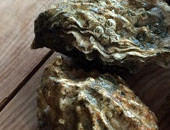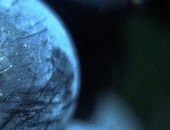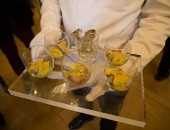Prestige Champagnes gain prominence in the market through their reputation often built over decades if not centuries. The title 'Prestige cuvée' would seem to confer a category upon Champagnes which should be open to definition rather than debate but since there is no regulation about the descriptor and its use, despite the extensive regulation of Champagne, people are sometimes confused about its meaning and implication. Many Champagne houses don't even signify that a particular wine is 'prestige' and to confuse matters further it is not always the most expensive of the Champagnes they produce nor 'the best'. The latter being an invidious comparison upon which no Champagne house would like to arbitrate. Understanding the concept of a 'prestige cuvée' is further muddied by some of the extravagant packaging on these bottles which conveys an impression that the very word 'prestige' is essentially shouldering a cost element which needs to be recouped, a different method of production or even a separate product line. However, none of these are real considerations although the cost of marketing may have an impact and certainly the longer aging that many of these wines undergo will require financing. However, it is not about how the wine is made (and packed) which sets it apart as 'prestige' - most of these wines are made in the same way as their stablemates even if with minor changes. It is on a more basic but fundamental level: the grapes from which they are made. Moreover, nearly all 'prestige cuvées' are produced in tiny quantities. Dom Perignon is a case apart, and it is one of the very few prestige cuvées available through a global distribution. Louis Roederer's Cristal is another, even if produced on a much smaller scale.
Ask a Champagne house about their prestige cuvée and in the case of Salon, for example, they admit to only one: the only Champagne they make - 'S' (they have a sister Champagne: Delamotte). This was always the philosophy of its founder, Eugène-Aimé Salon, to make an exclusive Champagne made from only Chardonnay from a single vineyard in Le Mesnil-sur-Oger. Other houses may point to their vintage Champagnes as the standard bearers in the category. Gosset's Celebris defines the very word 'prestige' and is definitely their most expensive wine. An assemblage from only Grand Cru vineyards it is so exclusive they don't even bother putting the words 'Grand Cru' on the label (some other houses have a similar policy). For some Champagne producers, it may be a non-vintage reserve. But as if to prove the importance of the vintage (and not every year makes a vintage) and its role in creating a prestige cuvée then perhaps Philipponnat's Clos des Goisses is the 'exception which proves the rule'. The 'Clos' is such an exceptional terroir that it produces great Champagne when others struggle, for example, in 2001 .
Other clues that you may be holding a bottle of a prestige cuvée in your hand, apart from the painful cost of its acquisition, are its original and curious shape (often redolent of bottles produced a century ago) and the name on the bottle - 'Dom Perignon', 'Clos des Goisses', cuvée Grand cru blanc de blancs, brut reserve, 'Celebris', 'Noble cuvée', 2004 Grand cru, cuvée 'some ancestor or other' and, of course 'cuvée Prestige' (fairly rare). Exoticism is definitely a trait.
From a technical standpoint there is no doubt that the wines' CVs are impressive: longer aging, lower dosage (to highlight character and nobility), possibly some variation in the use of malo-lactic fermentation (to preserve freshness) and whilst finesse and elegance are always welcome properties of a Champagne the over-riding ethos for any Champagne house is to obtain a wine of character. Probably more than any other sector of the Champagne market the wines are more differentiated among the prestige cuvées that in any other. This alone is sufficient reason for their elevated cost because for a Champagne connoisseur truly great wine is all about distinction and originality with the potential for longer aging. A criticism levied at a Champagne house might be that by taking wines for their prestige cuvée they are not available in the blend for their main wine and this therefore reduces their quality but it is such a micro-surgical operation that the impact on the main blend would be minute. Since its is already an 'assemblage' a deficiency in the non-vintage or vintage wine might be compensated for in other ways.
Greater global interest in prestige cuvées is leading to a commoditization of the wine and further confusion. Legitimate prestige Champagnes possess an integrity based on an objective which is to dignify the producer that makes them. More elaborate packaging, inflated prices and marketing are intended to find customers for wines which are intended to confer prestige on those that consume it. This is an entirely different meaning to the phrase 'prestige cuvée' which is known liguistically as a 'polyseme' and they can't therefore be considered as the same product. It might be better if these alternatives were called something else. Perhaps Cuvée 'vantarde' - signifying boasting and ostentation? 'Nouveau prestige' might also convey something about the market where these wines are directed. These wines haven't been reviewed here.
Some salient characteristics of some of the wines tasted :
Complex and extraordinary: Philipponnat Clos des Goisses 2003; Gosset Celebris 1998; Lanson Noble cuvée blanc de blancs; Salon 1999; Billecart-Salmon 2000 cuvée Nicolas Francois Billecart, Philipponat cuvée 1522.
Vinous: Pannier Egerie 2002
Authentic: Billecart-Salmon rose 2002
Sensuous: Pannier Egerie rose de Saignée 2002
Finesse: Gimonnet 2005; Lanson Noble cuvée rose; Gobillard 'cuvée Prestige' rose; Fagot brut reserve.
Crisp and elegant: Colin cuvée Grand cru blanc de blancs; Cattier Clos du Moulin; Paul Goerg cuvée Lady 2002, Cuvée Victor Mandois, Guy Charlemagne 2004 Grand cru, Tarlant cuvée Louis extra brut
Unusual: Moutarde brut cuvée des 6 cepages
See tasting notes under Related Articles and also the subject 'vintage Champagnes' for other tasting notes of wines previously tasted which are relevant to both articles - for example, Bruno Paillard 2002 brut.











Hey, if you are looking for more resources, check out my website 92N as I cover topics about Content Writing. By the way, you have impressive design and layout, plus interesting content, you deserve a high five!
Thank you for the article which makes fascinating reading
I entirely agree that there seems to be no clear definition of what is and what is not a ‘prestige cuvée and as you say, there is a lot of confusion about its meaning and implication. Since there are no rules and regulations about the definition I can’t see that the term is, or ever will be, of much, if any, practical value to the consumer.
In fact it appears to me that the only criterion for a ‘prestige cuvée is whether or not the producer chooses to call it such.
Every producer from the large to the small makes a cuvée which they consider to be their pride and joy and they inevitably refer to it as a ‘prestige cuvée’ although the term never appears on the label.
Therefore I don’t think that ‘prestige cuvée’ is a term that can help consumers to compare one brand with another. but merely to compare different cuvées within the range made by any given producer.
There is a Krug myth concerning MLF which you can understand better from listening to this short interview: https://finewinemagazine.com/664025/remi-krug-on-malolactic-fermentation-in-krug-champagne/
Here are some Champagne houses which don’t use MLF:
Bereche (brut reserve)
Colin ( cuvee Grand cru blanc de blancs)
Guy Charlemagne
Cuperly (Grand Reserve)
Gosset (Celebris)
Lanson (Gold Label plus their other cuvées)
Philipponnat ( Clos des Goisses )
Louis Roederer ( Cristal )
Billecart-Salmon (cuvee Nicolas Francois Billecart)
Salon
Hi. Can you tell me which producers might avoid using MLF in their wines. I heard Krug don’t use MLF? Thanks.